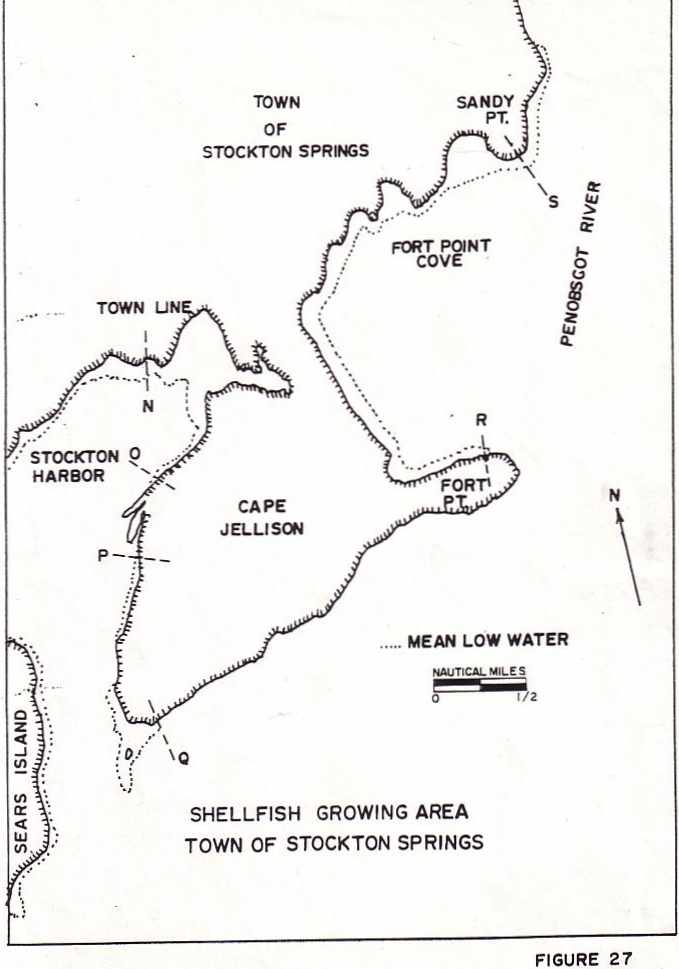
Softshell Clam Survey of Upper Penobscot Bay, 1966-67
STOCKTON SPRINGS
Stockton Harbor (N-O)
The portion of Stockton Harbor in the town of Stockton Springs may be classified as a typical clam flat in all respects. The intertidal zone is extensive and not unduly cluttered with rock outcrops or mussel beds. The total available intertidal area between the control points (N-O) has been mechanically estimated at 115 acres. Of this acreage, only four acres were deducted from the total because of rocky outcrops. Mussel beds are in evidence in some places but most are located below the low tide mark. Shellfish samples at 327 stations place the standing crop of commercial clams at 19,600 bushels. The resulting community value is estimated at $381,700 to 1,058,400. It appears that this cove is the most highly productive of all areas surveyed during the study. See Figure 27.
Cape Jellison (P - Q)
The intertidal zone between control points (P - Q) provides a very limited area for clam productin except the small extension at the southern tip of Cape Jellison A sheer rock outcrop along the shore in one section of thisa coast is completely coid of suitable clam producing bottom. Mechanical estimates of available intertidal zone within this area is placed at 33 acres. Rock outcrops and scattered boulders reduce the toal clam producing areas to 30 acres.
Clam populations appeared to be somewhat spotty through this area.
Sixty eight (68) samples were collected within this study area, and calculations showed the commercial standing crop of clams to be 4,000 bushels wsith a value to the community from $78,700 to 216,000.
- 48-
The intertidal zone within this study area is rather extensive and results from a reasonably broad band along the northeast shore of Cape Jellison which expands into coves as it approaches sandy point (S). See Figure 27. Mechanical estimates on the available tidal zone made from nautical charts gives a figure of 167 acres. The rocky outcrops between the several secondary coves reduces this total clam producing area to 123 acres. A standing crop estimate derived from 534 shellfish samples indicated that there are approximately 2,800 bushels of commercial sized clams populating the area with a community value from $55,000 to $151,200. See Table 5.
Conclusion
Results of this survey show that a population of 26,400 bushels of commercial size soft-shell clams inhabit the growing areas along the shoreline of Stockton Springs, with a community value of $515,400 to $1,425,600.
Projected figures for a second year show that the estimated potential clam population would be $11,100 bushels of marketable shellfish with a value to the community of $215,000 to $599,400.
------------------------------------------------------------------------------------- Back To Sears Island History
Back to Bay Management